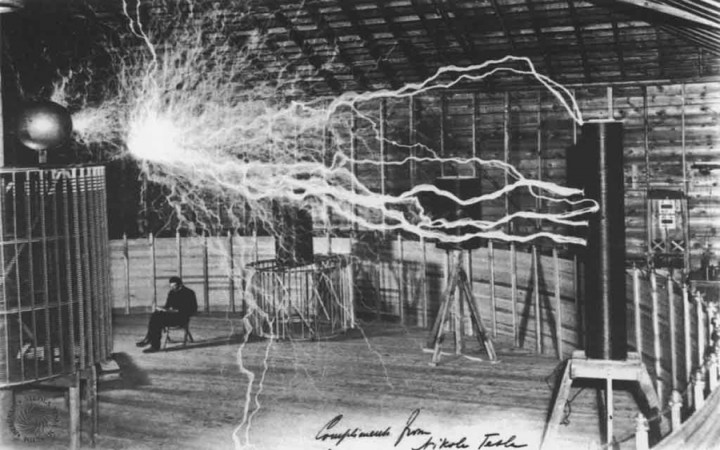Today’s Wonder of the Day was inspired by RONDA from Fond du Lac, WI. RONDA Wonders, “Who was Nikola Tesla?” Thanks for WONDERing with us, RONDA!
When you think of electricity, what famous names come to mind? Franklin? Edison? Watt? How about Nikola Tesla?
Nikola Tesla may be the most influential and prolific inventor you've never heard of. Born in 1856 in what is now Croatia, Tesla immigrated to the United States in 1884. His background in mechanical and electrical engineering earned him a job working alongside Thomas Edison in his Manhattan headquarters.
Tesla helped Edison improve several of his inventions, including his direct current (DC) motors. Many historical accounts tell the story of Edison offering Tesla $50,000 (over $1 million in today's dollars) for an improved DC motor design. Tesla produced one and allegedly tried to collect the money, but Edison reportedly claimed he had only been joking. Tesla and Edison parted ways soon thereafter.
After parting ways with Edison, Tesla tried to start his own companies focused on electricity. He experienced only mixed success and eventually brought his innovations and improvements to alternating current (AC) technology to businessman and engineer George Westinghouse, who believed Tesla's insights into AC technology could help solve the problem of how to transmit electrical power over long distances.
Tesla is well-known in the field of electrical engineering for his refinement of AC technology and the development of the AC motor. His insights would eventually help Westinghouse win the "Battle of the Currents" against Edison's DC systems, and AC power remains the standard of long-distance transmission around the world.
Over the course of his lifetime, Tesla was a prolific inventor. He obtained nearly 300 patents worldwide for his designs and ideas. Unfortunately, he was never able to turn his scientific genius into financial success.
Some of Tesla's other inventions and innovations include the following: a high-voltage transformer now known as the Tesla coil, electric oscillators, generators, meters, induction motors, RADAR technology, improved lights, X-rays, radio communications, remote control technology that used radio signals, and rotating magnetic fields, which became the basis of most AC machinery.
Tesla died in New York City in 1943, alone and quite poor. In his later years, he was known to work on outlandish ideas while spending much of his time feeding and talking to pigeons in city parks.





